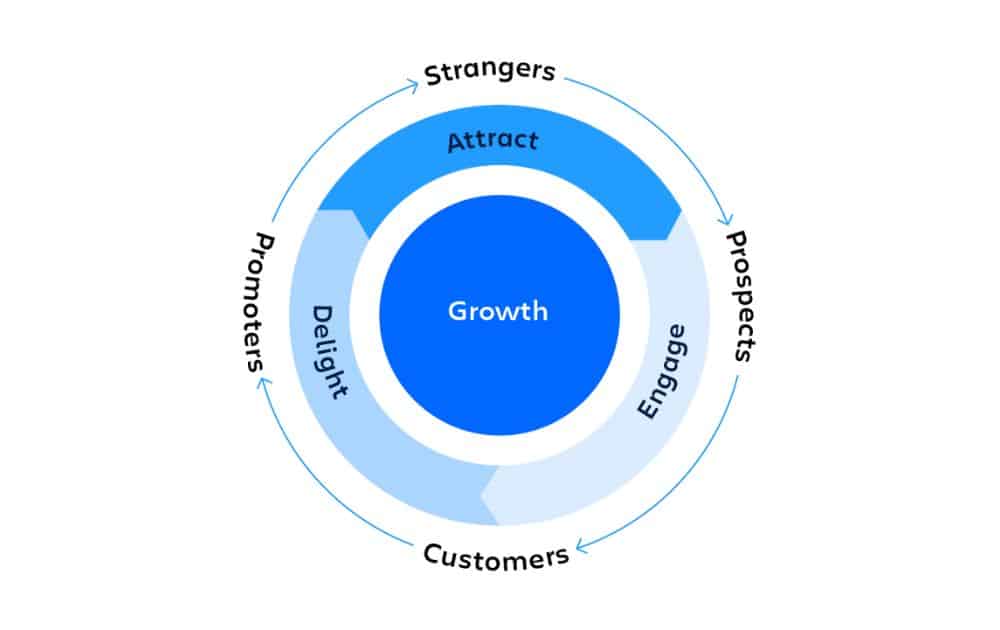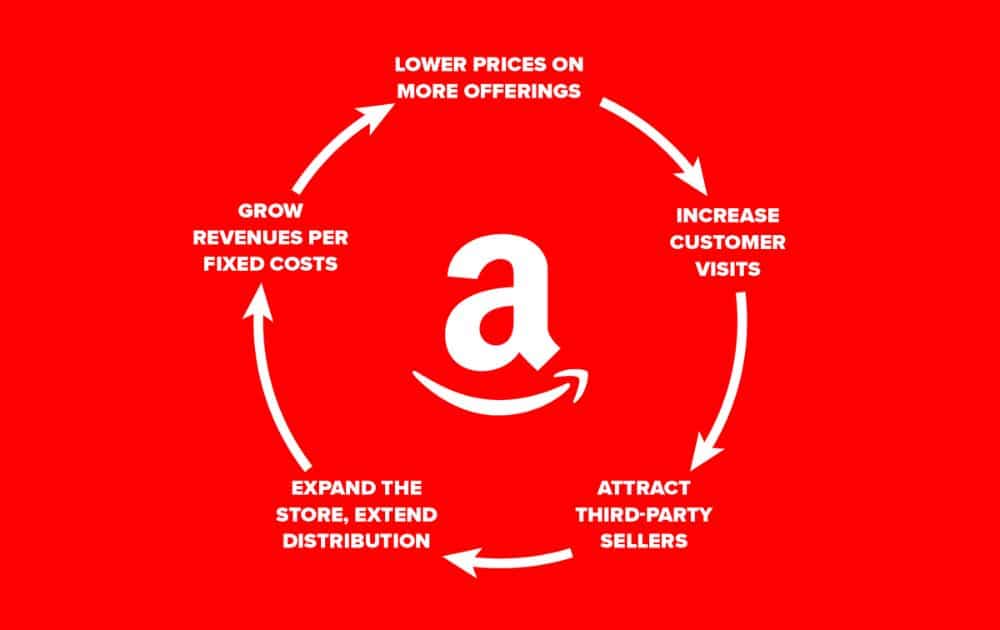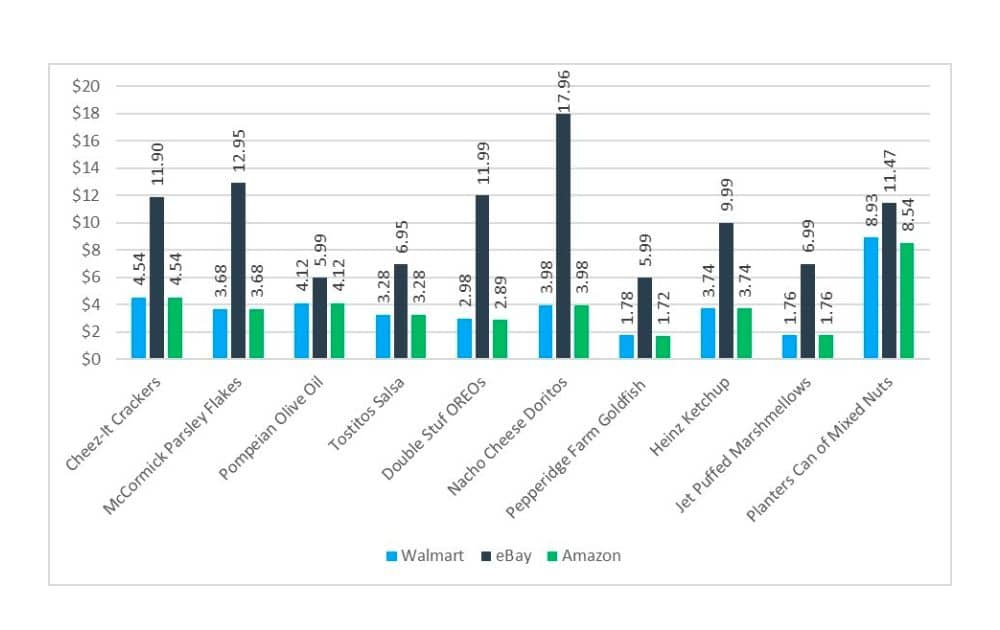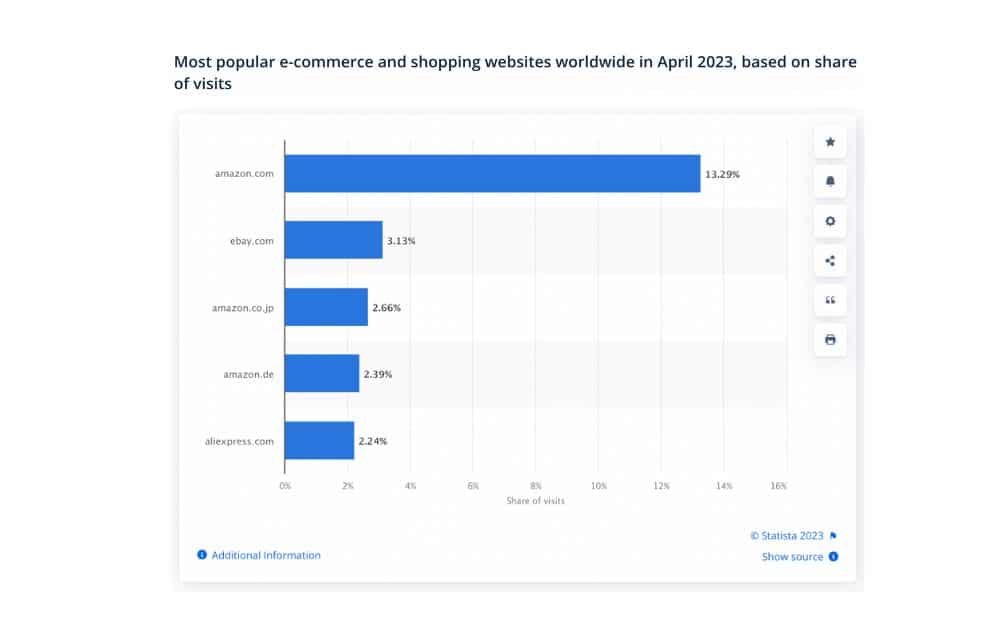Have you ever heard of the Amazon flywheel model?
Imagine a giant wheel, each spin gathering momentum, propelling Amazon from a humble online bookstore to a global marketplace titan.
This concept isn’t just the backbone of Amazon’s monumental success; it’s a blueprint for businesses aiming to scale new heights in today’s digital-first economy.
Below, we’ll unravel the layers of Amazon flywheel. We’ll also explore how this model can be a game-changer for sellers looking to amplify their strategy and sales.
What is the Amazon Flywheel?
Before we tackle the flywheel Amazon model, let’s first discuss the origin of the term “flywheel” in business.
The flywheel concept was developed by Jim Collins in his book, Good To Great. At its core, the model is a metaphorical illustration of how successful business transformations are achieved. It doesn’t happen through a single defining action or grand program, but through a consistent and relentless push of efforts over time.
Collins describes the flywheel as a massive metal disk mounted on an axle, requiring great effort to push it into motion. Initially, the movement is almost invisible, but with continuous pushing, the flywheel completes one full turn, then another, gradually building momentum.
This momentum represents the cumulative effect of many small pushes, each building upon the earlier work. The breakthrough comes not from one significant push but from the overall accumulation of effort.

As Atlassian CRO Cameron Deatsch says, the flywheel effect emphasizes how small wins can accumulate and create momentum over time. It’s a series of good decisions, diligently executed and accumulated one on top of another, that eventually create a sustainable growth.
The Flywheel Concept Applied to Amazon
While Collins popularized the concept of the flywheel, it was Jeff Bezos himself who masterfully applied it to the unique ecosystem of Amazon.
Journalist and author Brad Stone described the development of the Amazon flywheel model in his book, The Everything Store: Jeff Bezos and the Age of Amazon.
Bezos and his team reportedly conceptualized their unique virtuous cycle, which they saw as the driving force behind their enterprise.
Their model was structured as follows: reduced prices would increase customer traffic. More customers would then boost sales volume and draw in more third-party sellers who pay commissions.
This influx would allow Amazon to optimize fixed costs, such as fulfillment centers and website servers. Enhanced efficiency from these improvements would then permit further price reductions.
Here’s an Amazon flywheel diagram illustrated by business podcaster Rick Kettner:

The Amazon flywheel isn’t just a testament to strategic business planning; it’s a blueprint for sustainable growth. It demonstrates how focusing on core business elements and ensuring they work in harmony can create an unstoppable force in the marketplace.
Core Principles of the Amazon Flywheel
The Amazon flywheel revolves around four core principles. Each principle supports and amplifies the others, creating a self-sustaining cycle of success.
Customer Experience: The Heart of Amazon’s Strategy
By prioritizing user experience, from easy website navigation to swift delivery and responsive customer service, Amazon has fostered a loyal customer base.
This focus on customer experience ensures repeat visits and word-of-mouth referrals, both crucial for driving traffic and enhancing the brand’s reputation.
Policies and programs such as Amazon’s restricted products approval process and Amazon Insights Program ensure compliance and a clear understanding of what customers are looking for, allowing the platform to improve the shopping experience.
Price Value: Competitive Pricing and Its Impact
By offering products at lower prices compared to competitors, Amazon attracts price-sensitive customers, which in turn increases sales volume.
An eCommerce price comparison conducted by Channel Reply revealed that Walmart trumps Amazon and eBay in offering budget-friendly items. However, Amazon offered low-cost household items, pet supplies, and food options.

It’s crucial to note that pricing strategy is not just about being the cheapest option. It’s about providing value for money. Doing so, in turn, strengthens customer trust and loyalty.
Product Selection: The Role of Vast and Diverse Offerings
Amazon’s vast and diverse product catalog is a critical component of its flywheel. This extensive range of offers ensures that customers can find almost anything they need on the marketplace.
Diverse product offerings draw in a broader audience. It also attracts more third-party sellers, including Amazon international sellers, expanding the range even further.
The result not only enhances the customer experience but also contributes to the overall growth in sales and traffic. This leads us to–
Traffic and Conversion: Building Momentum in Sales
Increased traffic leads to higher sales volumes, which in turn attract more third-party sellers.
Statista’s April 2023 data reveals that Amazon’s international platform emerged as the leading eCommerce and shopping site globally, capturing over 4.8 billion visits that month. Following in second place was eBay.com, securing roughly 1.2 billion visits.

It goes without saying that the cycle of increasing traffic and conversion rates fuels the flywheel, creating a powerful momentum that drives continuous growth and expansion for Amazon.
Leveraging the Amazon Flywheel for Sellers
Understanding and utilizing the Amazon flywheel can be a game-changer for Amazon sellers. Here are a few strategies to try:
Focus on Customer Experience
- High-Quality Products. Ensuring every item you list on Amazon meets high-quality standards. This involves careful selection of products, thorough quality checks, and ensuring that product descriptions accurately reflect what you are selling. High-quality products lead to fewer returns and higher customer satisfaction.
- Responsive Customer Service. Quick and helpful responses to inquiries and issues can significantly enhance the customer experience. This includes addressing concerns, processing returns efficiently, and providing useful product information.
- Seamless Shopping Experience. Make the shopping process as smooth as possible. This involves an easy-to-navigate product page, clear and concise product information, and a hassle-free checkout process. A seamless experience reduces cart abandonment and increases the likelihood of repeat business.
Offer Competitive Pricing
- Market Trend Analysis. Stay informed about competitors’ pricing strategies and market demand for your products. Use tools and resources to monitor market trends and adjust your prices accordingly. It also helps to be aware of seasonal trends, sales cycles, and consumer behavior to be able to set competitive prices.
- Balance Price and Quality. While competitive pricing is important, it should not come at the cost of quality. Find the right balance where your pricing attracts customers but maintains a reasonable profit margin. This balance is crucial for long-term business sustainability.
- Dynamic Pricing Strategies. Consider adopting dynamic pricing strategies where your prices can adjust based on market demand, competition, and other external factors. This approach can help you stay competitive and maximize profits.
Diversify Product Selection
- Expand Product Range. Regularly explore opportunities to expand your product range. This could mean adding new variations of existing products (like different sizes or colors) or introducing entirely new product lines that complement your current offerings.
- Cater to a Wider Audience. By diversifying your products, you can cater to a broader customer base. Understand the needs and preferences of different customer segments and tailor your product selection to meet these diverse needs.
- Keep Up with Consumer Demands. Keep abreast of evolving consumer preferences and market trends. This involves keeping an eye on emerging trends, customer feedback, and market research. Adapting your product selection to align with these trends can help in capturing new markets and retaining current customers.
Related content: Top 10 Ecommerce Mistakes
Harnessing the Power of the Amazon Flywheel
As we’ve explored the ins and outs of Amazon flywheel, it’s clear that this model is more than just a strategy; it’s a comprehensive approach to building a solid Amazon business.
The flywheel model offers a roadmap for sellers to enhance their presence, improve customer experiences, and achieve sustainable growth.
By embracing these principles and continuously adapting to market changes and customer feedback, sellers can spin their own flywheel of success.
Authors





